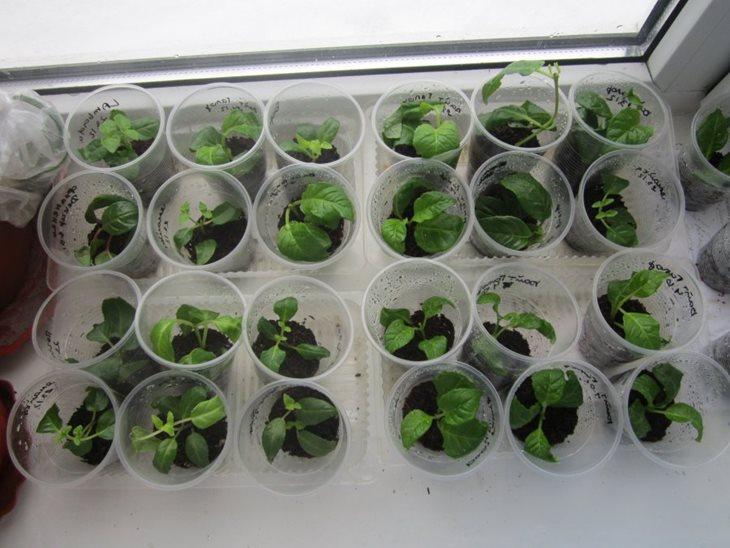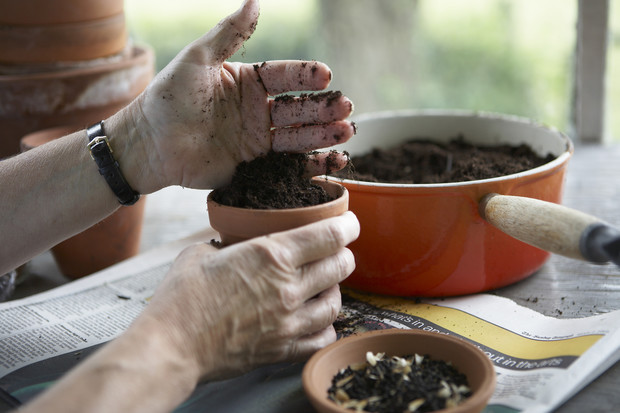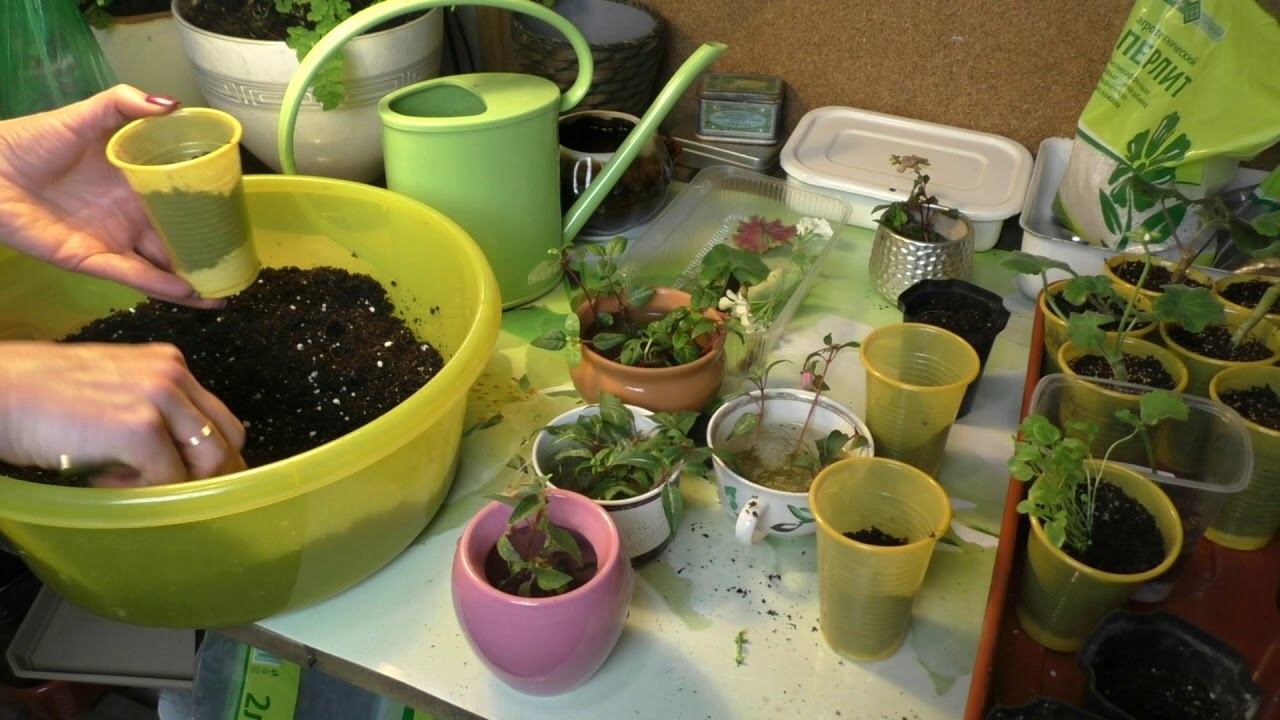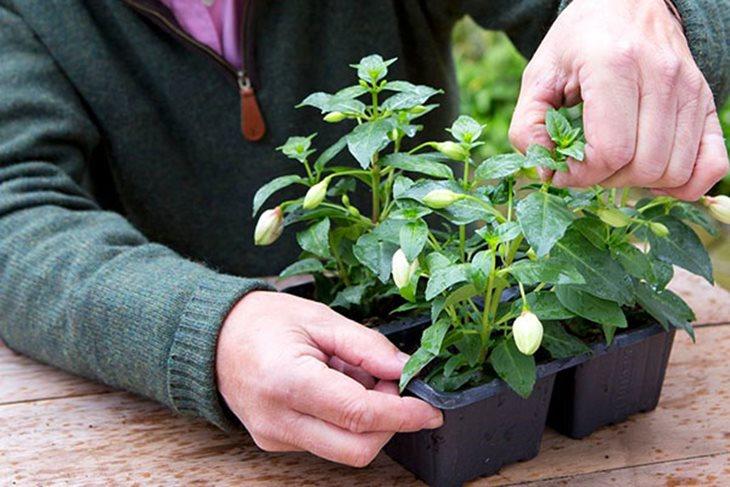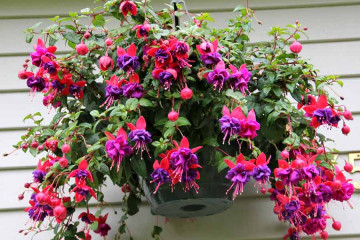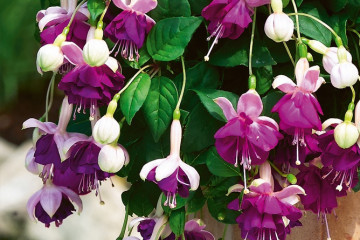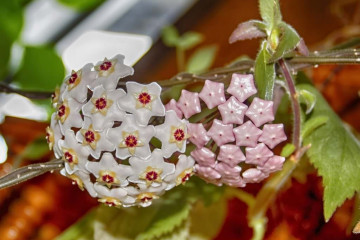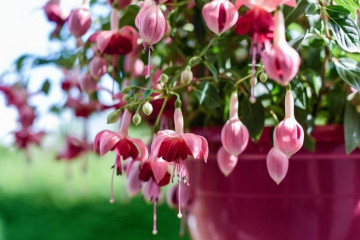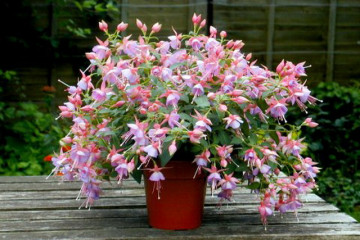How fuchsia reproduces at home
Content:
The earliest news of fuchsias took place about 300 years ago. These flowers have always made a luxurious impression on flower growers. Fuchsia has not lost its appeal over the years. In recent decades, many new varieties have appeared. This article will tell you about the propagation of fuchsia cuttings at home.
Reproduction of fuchsia by cuttings at home
This plant amazes with its beautiful flowering. One of the features of fuchsia is the slow development of the flower. Thus, the flowering period extends almost throughout the summer.
It doesn't take much effort to grow fuchsia. Even a novice gardener can do this. The easiest way to get started is to buy a finished flower from a specialty store. In the future, you can get planting material from it and grow several plants.
It is believed that propagating fuchsia is not difficult. There are two ways: with seeds and cuttings.
How fuchsia reproduces
For flower propagation at home, cuttings are more preferable. However, it is also customary to use cultivation from seeds. When deciding how to propagate fuchsia, you need to assess the significant differences.
When propagating by cuttings, the situation is different. Flowers obtained using this method completely repeat the properties of the parents. This does not require any additional effort.
In addition, the difference between the two options is also that growing from seed is a more complex and time-consuming process than using cuttings.
Benefits of grafting
This is the best way to propagate fuchsia at home. This is due to the fact that the process is guaranteed to transfer features from the parent plant, as well as to the relative ease of use.
How to plant fuchsia cuttings
When the cutting has been rooted, it needs to be transplanted. This will require a soil of a certain composition. It should have a neutral pH. A drainage layer is placed on the bottom of the flowerpot where fuchsia is transplanted.
If you plant fuchsia, you need to be very gentle with the plant's root system. This is due to the fact that it is fragile and can easily break. After planting, fuchsia is watered with settled warm water.
Since it is not difficult to root fuchsia with cuttings, the method is available to everyone. The main thing is not to forget to leave a label on the pot with a description of the plant variety. Rooting will end when the fuchsia begins to actively grow.
For the propagation of fuchsia, it is important to choose the right pot in which it will grow. For home use, those with a diameter of 18-20 cm are often accepted. Shallow containers made of clay are best suited. This material is not capable of overheating.
How to root fuchsia
The procedure for rooting fuchsia using cuttings is as follows.
Training
Since it is better to cut fuchsia in the spring, the following should be done in advance. For planting, cuttings 10-12 cm in size are usually used. It is necessary that they have two or three pairs of leaves. The cut is made with a sharp knife, separating the cutting with an oblique cut.
An important step in fuchsia cuttings is the rooting procedure. To stimulate the cutting to a more rapid development, the cut is treated with special stimulating compounds. For this purpose, you can use root, zircon, heteroauxin or epin.
Rooting methods
The cuttings should be planted in plastic cups of water. In this case, the lower leaves must be removed. If this is not done, then in the process of growth they will bend down and come into contact with water. From this, rotting can begin. For fuchsia, it is recommended to use soft filtered water. It will take about two weeks for the roots to grow.
Another rooting method that can be applied is as follows. Cuttings must be planted in plastic containers filled with a special substrate. For this, you can use sawdust or vermiculite. This composition must be moistened.
Another breeding method is to use a peat tablet. Before planting, it is necessary to soak it in warm, settled water. When using this method, the highest percentage of rooting takes place. In this case, its value reaches 99%.
Can be planted in an earthen mixture. To make it looser and better allow air to pass through, sand or vermiculite should be added. When planting cuttings, you need to water them abundantly.
How to grow
When planting, it is necessary to ensure the greenhouse effect. To do this, cover the container with sprouts with a layer of cellophane or a piece of glass. At the same time, it is important to regularly ventilate. When condensation forms, it must be removed.
The containers should be placed in a well-lit place, but they should not be exposed to direct sunlight. It is necessary to provide suitable temperature conditions: the sprouts should be warm, but not too hot. It is best if a greenhouse is used to grow the cuttings.
As soon as the formation of the root system occurs, the sprout must be planted. As containers for growing fuchsia, it is convenient to use glasses or plastic containers, as well as small pots.
Possible difficulties in breeding fuchsias
It should be borne in mind that cuttings should be guided by the following rules.
Optimal conditions
The optimal temperature regime should not be violated. The temperature should not fall below 14 ° C or rise above 24 ° C.
Although watering is required so that the root system does not dry out, it is also necessary to spray the bushes 1-2 times a day. When the cold season comes, the life of the plant stops. Therefore, in winter, watering must be minimized.
You need to provide the right lighting. Fuchsia loves bright light, but it shouldn't be scorching. The best choice is abundant diffused lighting.When grown at home for fuchsia, the best place will be window sills near the most lighted windows.
As soon as flowers appear, it is not recommended to transfer the flower to a new location. Because of this, flowering may stop.
On the street, fuchsia can be grown if it is located in the shade.
Watering is necessary every time the topsoil begins to dry out. During hot weather, it is important to carry out the procedure daily.
Top dressing
The flower needs to be fed regularly. For this, it is necessary to use complex fertilizers. This must be done during the period when the fuchsia is blooming. At this time, you need to choose fertilizers with a high content of phosphorus and potassium. Top dressing should be done on a weekly basis throughout the year with the exception of the winter period. Fuchsias growing outdoors need to be fed with organic fertilizers.
Care features
Removing dried flowers and leaves is important. It is necessary to regularly loosen the soil. To combat pests, you need to inspect the plant.
If there is not enough light, then the plant is able to shed flowers. The stems will stretch strongly under such conditions.
It is important to consider that the roots do not react well to overheating. It is necessary to keep fuchsia in such conditions that the temperature for the flower is comfortable.
Although these flowers are undemanding to care, one must nevertheless take into account that they do not tolerate excess moisture well. If this problem is not solved in time, then root rot will occur, which will spread to the leaves. As a result, the flower may die.
Pest and disease control
The presence of excess moisture creates favorable conditions for the plant to become infected with a fungal disease with gray rot. To cure fuchsia from it, it is necessary to use special fungicidal preparations. Products with a high copper content can also help.
Rust is also a danger to the plant. This is when yellow-orange spots form on the leaves. At the first stage of infection, the lower leaves begin to fall off intensively. In the future, all the rest fall off. If a sick flower is treated with the drug virtan, then this will help cure the flower.
For a plant, not only diseases can be dangerous, but also insect pests. Aphids, spider mites and whiteflies can attack the flower. These insects, hitting fuchsia, are located on the lower part of the leaves and feed on the sap of the plant. At the same time, the leaves dry out, turn yellow and fall off, due to the fact that they do not receive nutrition.
Suitable insecticides must be used to control insect pests.
Fuchsia transplant in spring
Since this flower every spring requires a fuchsia transplant into a new soil, you need to know how to do this correctly.
Conditions to be provided
At the new place, the following conditions must be provided for fuchsia.
- You need to choose the right place where the fuchsia will stand. She does not like moving, so after the end of the transplant into the new land, the pot must be put in the same place where it was before.
- It is important to consider what kind of air exchange the plant will have. Fuchsia does not feel well if it grows in a draft or is in stagnant air for a long time. She needs to provide moderate ventilation.
- The soil can be purchased at the store. For flowers, a ready-made universal is suitable, which can be purchased at a specialized store.
It is allowed to prepare the ground yourself.This must be done as follows. It is necessary to take in equal parts sand, leafy soil, as well as compost or peat. To make the composition loose enough, it is necessary to add perlite or vermiculite. It will be beneficial for the plant if you additionally add bone meal. This will help the fuchsia flower more abundantly. In this case, it is enough to dilute 1 tbsp. a spoonful of flour for each liter of the prepared composition.
Transplant procedure
Fuchsia transplant stages:
- It is necessary to take the prepared pot and pour a drainage layer on the bottom. It is enough that its thickness is 2 cm.
- Add a small layer of soil.
- The plant must be transplanted along with the lump of the old earth. In this case, the roots will be protected from possible damage.
- Holding the fuchsia with your hand from the sides and from above, add the prepared soil.
- Water the plant abundantly. In this case, it is important that waterlogging does not occur.
After the end of the transplant, it will be useful to spray the plants with a growth stimulator. For this, the epin tool is suitable.
Follow-up care
When feeding, it is important to consider the growth stage in which the flower is located. During the period of intensive growth, the plant needs nitrogen, and during flowering - fertilizer, which contains a lot of potassium and phosphorus. Feeding flowers growing in indoor conditions should be carried out weekly.
To propagate fuchsia in a house or apartment, no special skill is required. The main thing is to carry out the entire procedure correctly. With the right knowledge, you can grow fuchsia without fear of problems.
